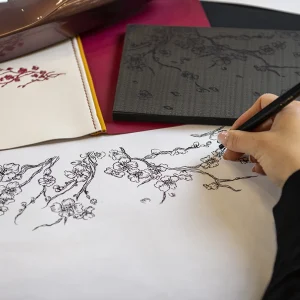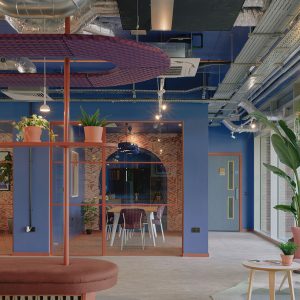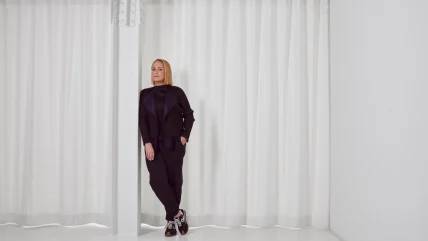
Words By Tony Rock
Visiting the Sydney Opera House as a child in her native Australia had a profound impact on Rachel Basha.
‘That was a pretty phenomenal moment,’ says the founder and CEO of Basha-Franklin, an interiors and architecture practice that specialises in workspace and residential design.
‘I grew up in a country town and although it was beautiful geographically, being in Sydney was something of a next-level total experience of what architecture and design can do.
‘There was such a great procession to entering that building. Not many buildings actually change you emotionally and have such a big impact.’
While visiting the iconic landmark had a transformative effect on the young Basha, family also played a significant role in nurturing her interest in design, with her growing up in a family that ran a furniture business, while her grandfather was a builder.
‘I had a lot of opinions on the furniture,’ Basha recalls. ‘I could identify what I thought was a really nice piece – and what I didn’t like as well.’
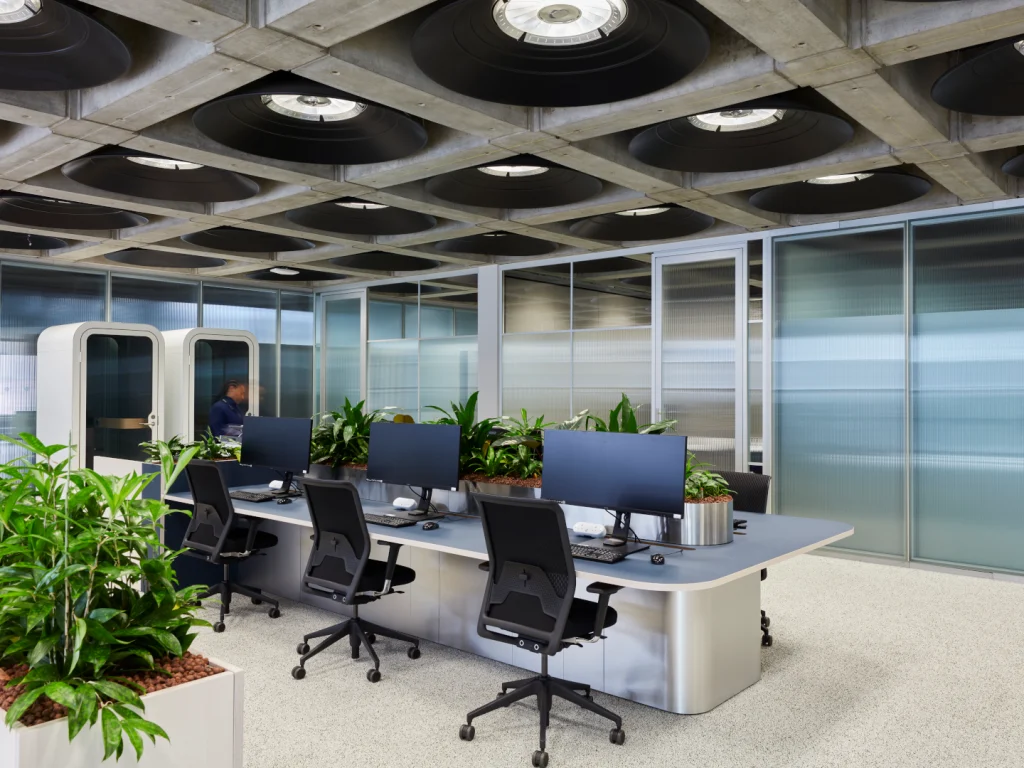
The fascination with design turned into a career, naturally, and having studied and worked in Australia, Basha moved to London in 2002. Five years later, recognising an opportunity to launch a new practice, she founded Basha-Franklin. Today, the practice is known for its contextual and creative designs that satisfy the needs and wants of clients for both occupiers and UK property developers such as Related Argent, Canary Wharf Group, Landsec and W.RE, and investment firms Morgan Capital and Brookfield.
‘We want to always design for the particular client – design for the location, design for the time and the future, and always take every project as a unique challenge,’ says Basha of the company’s philosophy. ‘With every project, whether it’s a small thing or a big thing, we’re always thinking about what unique element of craft, art or other creativity we can integrate into the experience of the building.’
Explaining the motivation for starting her own business, Basha says: ‘I always wanted to drive a better outcome in terms of service and product in design. And I always had my own ideas about how I wanted things to work and how to deliver design.
‘I’ve always been very passionate about that inside-out experience, and now we are delivering integrated architecture and design – although, as an interior designer, that’s not how the business started – it has really come together in that total design experience.’
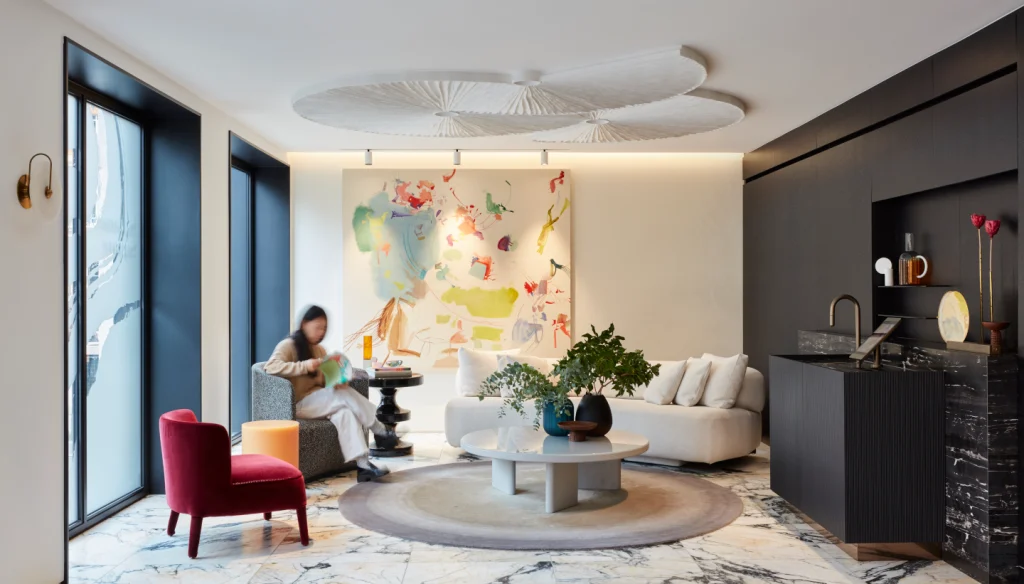
She thinks of herself as a strategic thinker, someone who sees the whole picture, and enjoys taking a holistic approach.
‘It’s always a 360-degree view: looking to the future, how we’re going to achieve something, who needs to be involved, who can we partner with,’ she explains.
‘There are a lot of different aspects that come into a successful project, and we know that we need the right partners to achieve that. My mind thinks in that way.
‘I’m always trying to get everybody to contribute to the design conversation. We need to work together, all of us – clients, developers, architects, designers, consultants, artisans, artists, contractors – as co-creators. And we need to shift from the “designing on our own terms” to “designing with” people mindset.’
Leadership, meanwhile, is about good communication. But that does not mean employing a top-down, dictatorial style – rather, Basha practises ‘bottom up, 360-degree’ leadership because she wants people to achieve their best and take their career forward in the most positive way and as part of a team.
Leadership is also about working hard to hire people that share Basha-Franklin’s values.
‘Now that we’re a really cohesive team, I want people to develop their own leadership skills,’ she insists.
As with any business, there are challenges. Squeezed budgets, for instance, are one source of frustration.
‘Where you’re under very tight programmes and budgets, it can be quite frustrating for designers when we don’t get to really deliver the high-quality solution that we want to,’ Basha explains. ‘So it’s a challenge, and it continues to be a challenge. But that’s the real world and the challenge that I want to face [head-on].’
Operating more efficiency is one way of managing that this issue, she adds.
‘We’re always working at how we can do things more efficiently. Particularly on some of the more rudimentary process-driven pieces so that we can leave time for the high-quality design thinking that we need to do to keep moving forward.’
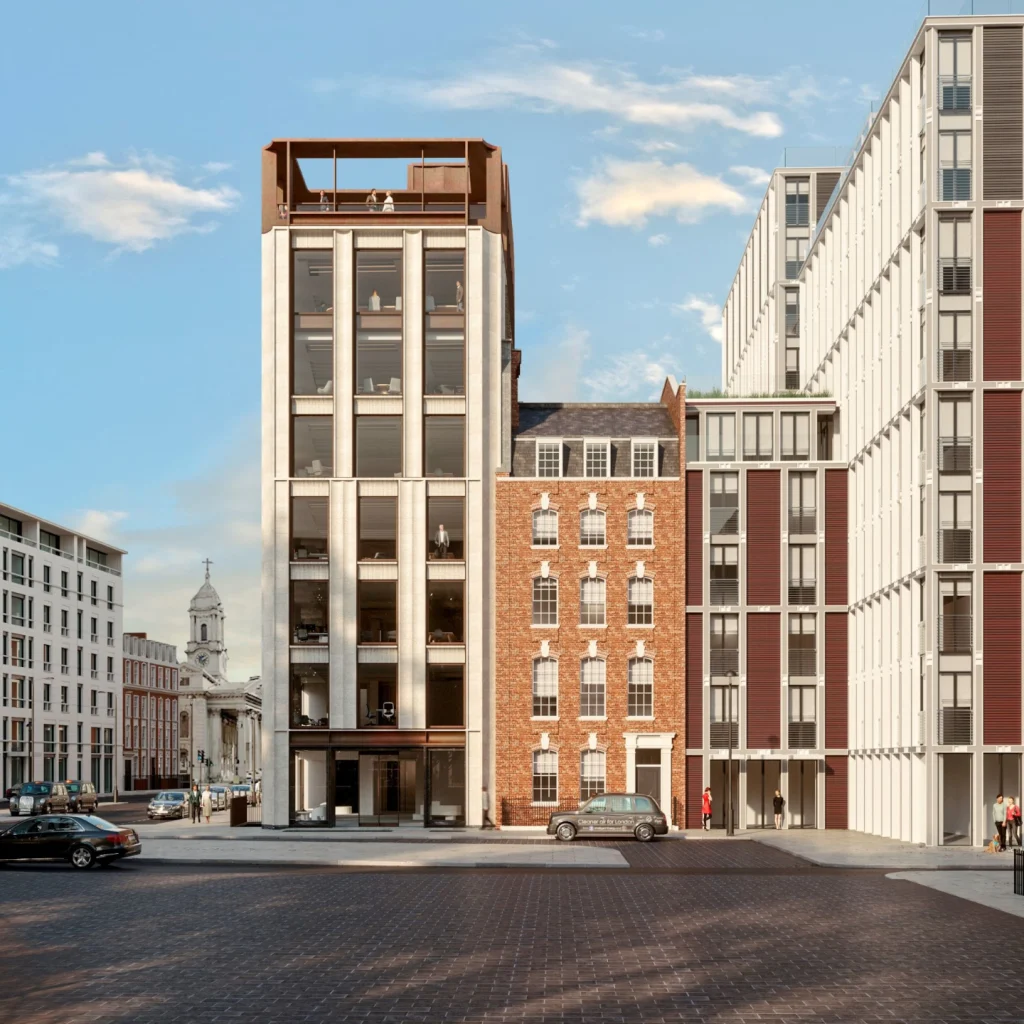
Further challenges cited by Basha include the rise of artificial intelligence – however, she is optimistic about the future, particularly for those practises that produce high-quality solutions.
‘From what I’ve seen so far, we’re not completely under threat,’ she begins. ‘The high-quality designers will be the ones that will be in demand, and some of the “roll it out, cut, paste, repeat” [designers] will be more under threat, I would have thought.’
She continues: ‘People have increasing levels of experience of good design. As more people experience great design, they expect and are driven to better design solutions, particularly at work – once you’ve worked in a great office, you don’t really want to go backwards and work in a poorly designed office.
‘There are clients who really come to us for that level of design and know that it adds value to the completed project and the experience of the user.’
Having spent more than 25 years in the industry, Basha has worked across a range of sectors and building types, but when asked to name the project she is most proud of, she replies it’s a question that cannot be answered – because it’s akin to having to choose your favourite child.
‘It’s always the next project that I’m the most excited about,’ she replies, when pressed.
Currently, the latest Basha-Franklin project is 25 Hanover Square, in Mayfair, London, for BNF Capital. Basha-Franklin has retained much of the existing structure. It has also relocated the core to the south, to maximise the floorplates and unlock internal space. The company says that a data-driven occupational strategy focused on adaptation and user experience ensures that the internal areas are ‘fit to flex and meet the needs of occupiers today and tomorrow’.
‘That is our first major architecture and interiors project and that will be the best example of an inside-out solution,’ says Basha. ‘The interiors and the architecture team have worked together from the very inception of the building. It is going to have a great workspace, great hospitality spaces. It’s going to have integrated art, which I’m really passionate about.
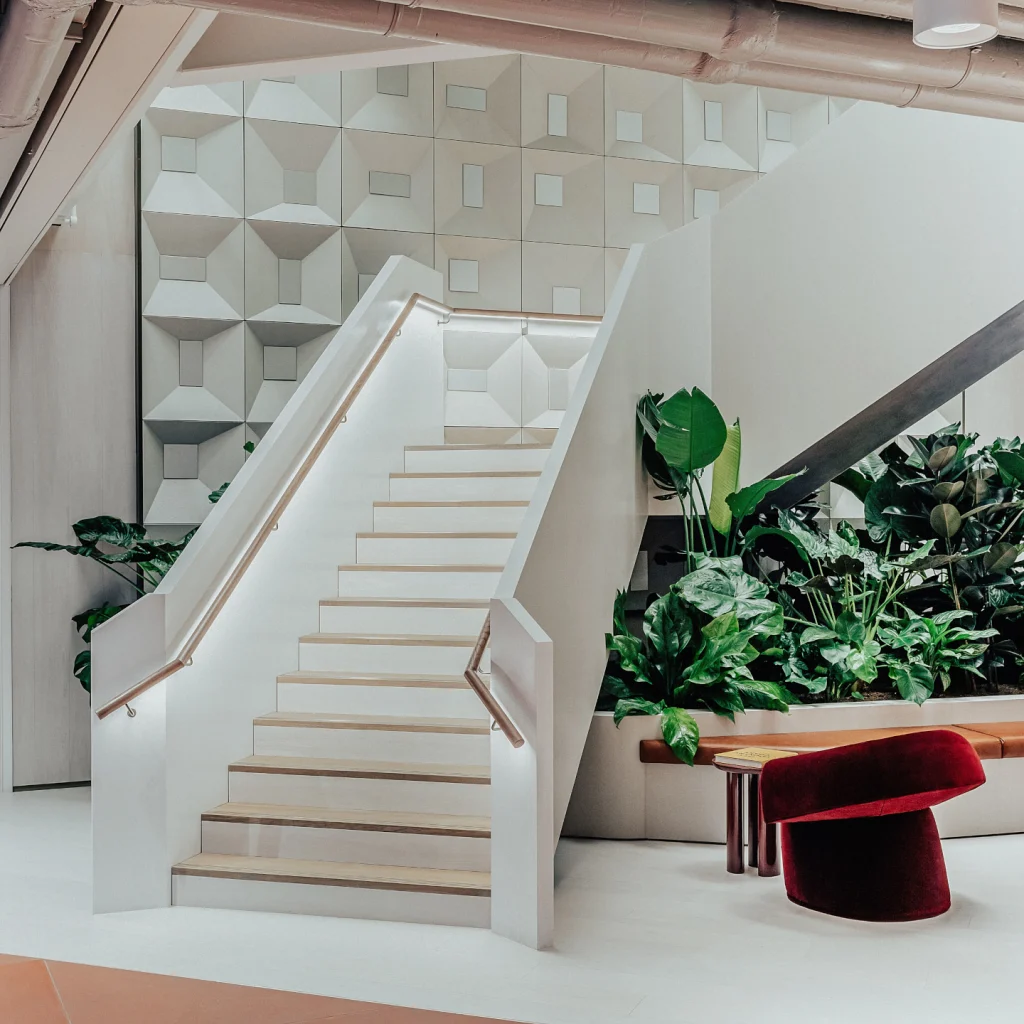
‘This is going to be one of those experiential offices that we hope the occupants absolutely love.’
Her years of experience have led her to believe that a female perspective can bring specific design values to a project.
‘I do think that we strive to add an extra layer to the design, in terms of the complexity of form, texture,colour function and meaning,’ she begins. We also design with high level of empathy for the end user. I think that women are nurtured to be more caring and empathic, and we naturally lean into this aspect of design. We don’t particularly like to dwell on this as specific to being female as any good design is very empathetic to the user. We focus on how spaces feel and this care for the emotive response to space is very impactful.
‘It’s [also] super important to me that the functionality of a space is good ergonomically and psychologically for everybody. We want to design an inclusive experience. We are invested in researching the impact space has on people and culture and are up for the debate to constantly improve the experience. We also get out and experience space for ourselves. Travel, variety and exploration is so important for us to bring this back to our work. That curiosity is essential.
Basha acknowledges that being a woman in the industry has, at times, been particularly challenging. She recalls moments of being quickly dismissed or overlooked – frustrations that stemmed from long-standing industry biases. For years, many of the values she championed – creativity, design quality, sustainability and inclusivity – were dismissed as mere nice-tohaves. Driving high-quality, thoughtful solutions often felt like an unnecessary battle.
In the early stages of her career, the male-dominated nature of the industry made it difficult to offer a distinctly female perspective. There were times, she reflects, when being the only woman in a project team left her feeling like an outsider. Not being able to mirror the backgrounds or behaviours of decision-makers was a clear disadvantage, and at times, she had to contend with ‘quite aggressive’ behaviour.
However, she is quick to point out that while the industry, and society more broadly, is still evolving, there has been significant progress. Working environments have improved thanks to greater awareness, more gender-balanced teams, women equipping themselves to handle difficult situations, and a growing willingness to challenge poor attitudes. On a personal level, she says she has developed greater resilience too.
‘I absolutely want to see more women occupying spaces that have traditionally been male-dominated,’ she says. ‘Diversity leads to better outcomes, and that benefits everyone. Ideally, one day we’ll stop talking about gender divides altogether, and simply focus on the best people for the job.’
To the future Rachel Bashas, those hoping to follow in her successful footsteps, she offers this advice: stay positive, make great industry friends, work smart, and build resilience, even though it can be deeply uncomfortable at times.
Success, she adds, doesn’t come easily: ‘You have to expect that, even if you’re very talented, there’s a whole other world of selling your talent. Being talented alone isn’t enough.
‘You need to embrace a wide range of skills to put yourself in a strong position. Every day is a school day, it’s a real journey.
‘And it’s the challenges you take on during that journey that ultimately build the foundation for continued success.’



